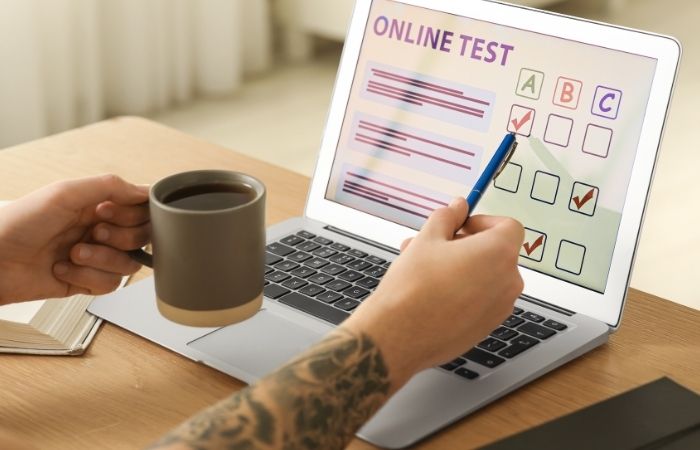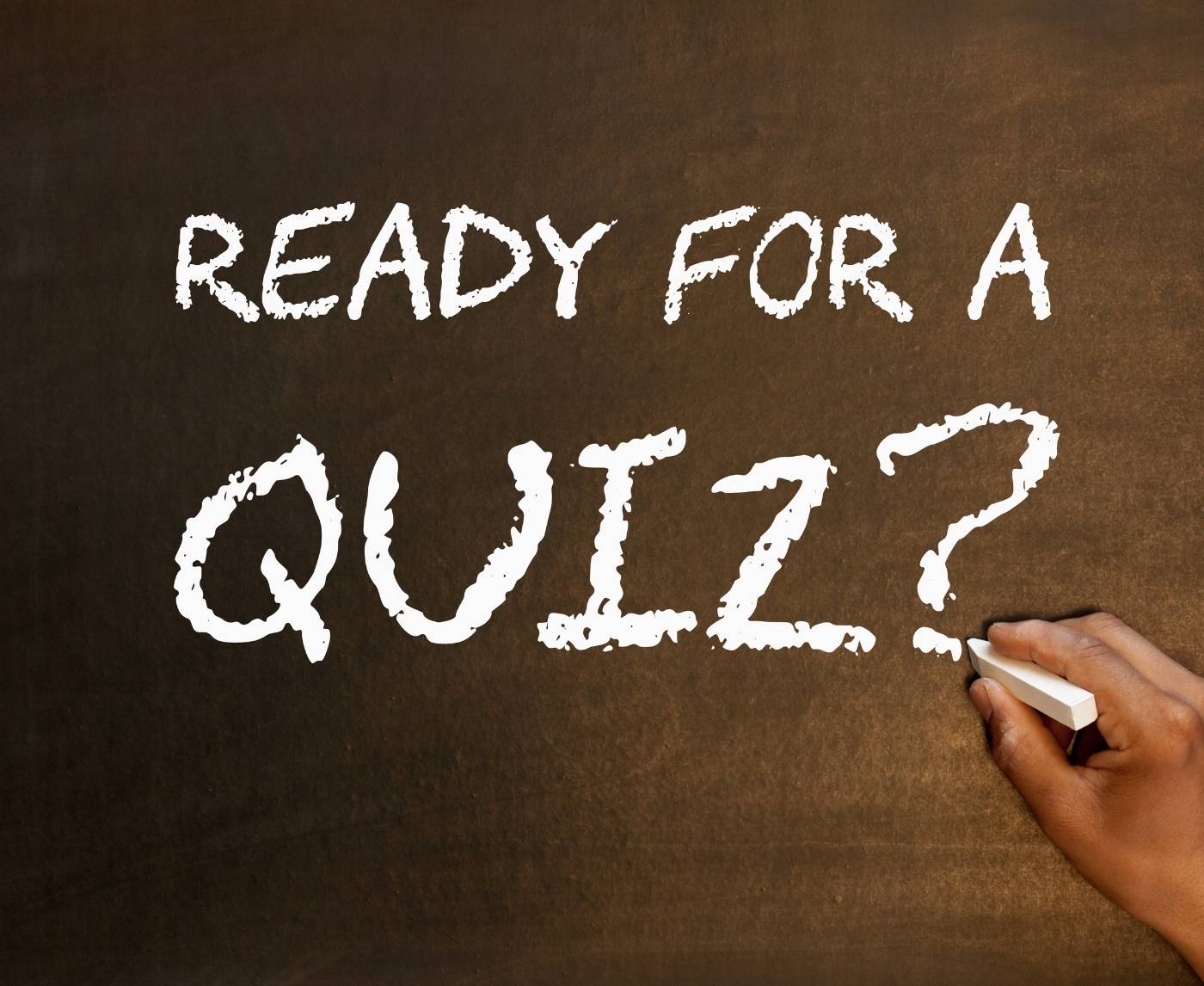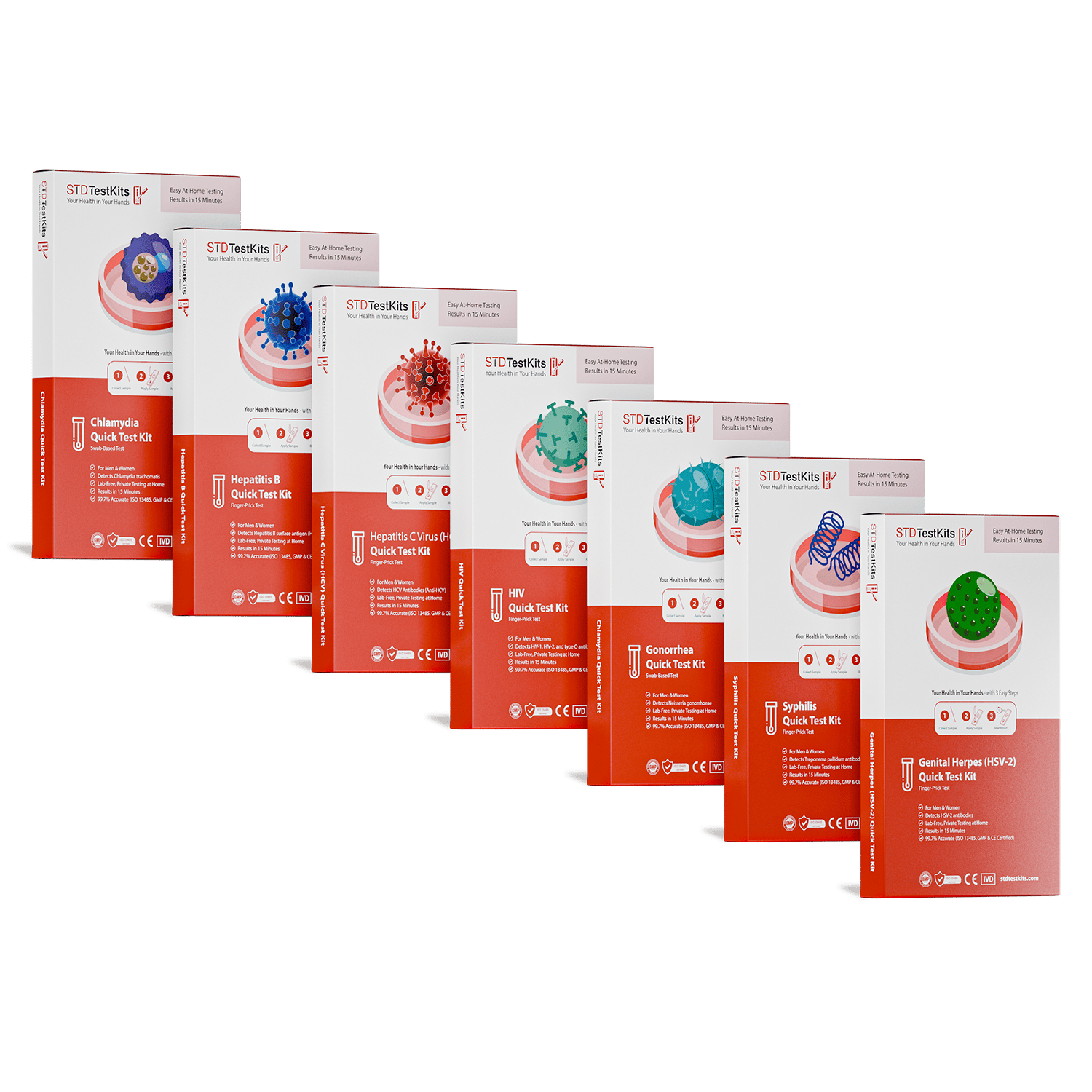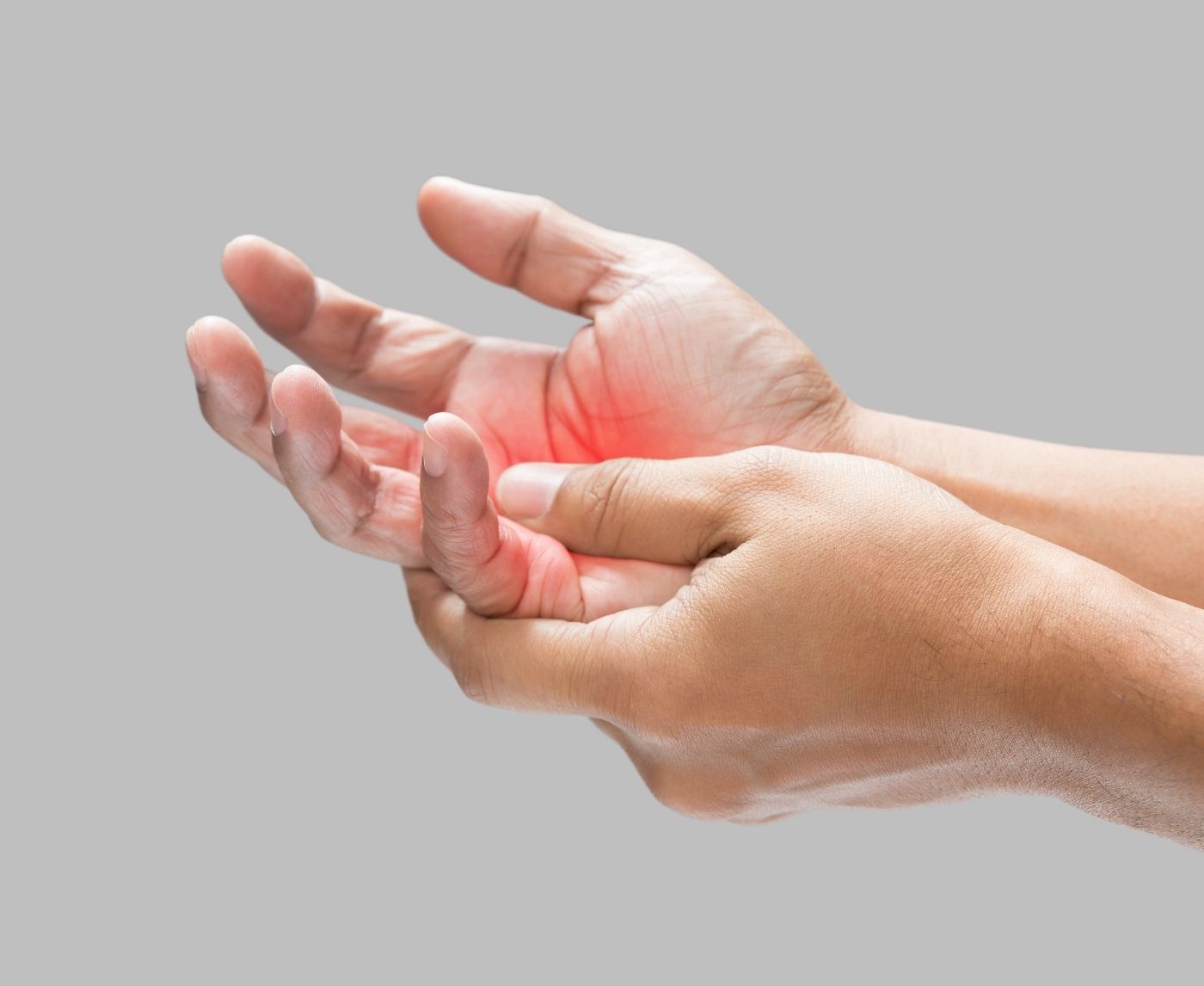Can You Get an STD from Hands Alone?
Quick Answer: An STD risk checker quiz helps you decide when and what to test for after a possible exposure. It’s not a diagnosis, but it can guide your next move.
Who This Is For (And What It Can Do for You)
This guide is for anyone who’s second-guessing a decision, freaking out after a one-night stand, or feeling something weird and wondering, “Is this an STD?” You might not want to go to a clinic yet. You might be scared to tell a partner. You might not even know if what happened counts as “risky.” That’s where a structured risk checker comes in, zero judgment, just clarity.
Let’s be clear: this tool doesn’t replace a medical diagnosis. But it does something your brain can’t always do when it’s spiraling at midnight, it lays out your risk logically, based on exposure type, symptoms, and timing. It also tells you when to test and which infections to consider, so you’re not just guessing in the dark. Whether you're queer, straight, monogamous, poly, cautious, impulsive, or just human, this is for you.

People are also reading: Paid Sex, Real Panic: Do I Need to Get Tested?
How the STD Risk Checker Works
The quiz functions like a guided triage. It asks about what kind of sex you had, whether protection was used, what symptoms (if any) you're experiencing, and when the encounter happened. Based on that, it sorts you into a general risk tier and recommends a testing window and test types.
For example: someone who had protected vaginal sex once, no symptoms, no known exposure, low risk. Someone else had unprotected oral and genital contact, and now has a sore, higher risk. The checker doesn’t judge. It just maps exposure to risk.
Behind the scenes, the logic is built on CDC transmission data, incubation timelines, and test accuracy windows. Every recommendation is grounded in published guidance, not vibes.
STD Risk by Exposure Type
Figure 1: Risk levels based on exposure. These are general guidelines and should be paired with symptom awareness and timing accuracy.
Timing Matters: When Should You Test?
One of the most common mistakes people make? Testing too soon. Every STD has a different “window period”, that’s the time between exposure and when a test can reliably detect it. If you test before that window, a false negative is more likely. The risk checker factors this in and gives a personalized time window based on what happened.
Here’s a snapshot of typical window periods to give you an idea:
Figure 2: Recommended timing for STD tests. These ranges reflect when most tests reach reliable accuracy.
What the Quiz Tells You (And What It Doesn’t)
Let’s get this out of the way: this quiz doesn’t diagnose you. It can’t tell you if that itch is herpes or just razor burn. What it can do is narrow your risk based on your answers and help you take smart next steps. It bridges that frustrating gap between “something happened” and “I have no idea what to do now.”
After you answer a few questions about your exposure, protection use, symptoms, and timing, the tool gives you:
- Risk Level: Low, Medium, or High based on activity and protection
- Next Step: Whether to test now, wait, or monitor symptoms
- Suggested STDs: Which infections are most likely for your situation
That’s it. No scare tactics, no vague “talk to your doctor” cop-out. Just tailored, evidence-backed suggestions you can actually use. Then it’s your call what to do next.
Check Your STD Risk in 5 Quick Questions
Don’t overthink it. Just grab a pen, use your fingers, or tally your points as you go. At the end, add up your score and check your risk level. This isn’t a diagnosis, but it’s a damn good guide to what to do next.
1. What kind of sexual contact did you have during your last encounter?
A. Kissing or touching only – 0 points
B. Oral sex only (given or received) – 1 point
C. Vaginal or anal sex with a condom – 2 points
D. Vaginal or anal sex without a condom – 3 points
2. Did the condom stay on the entire time (if one was used)?
A. Didn’t use one – 2 points
B. Yes, no issues – 0 points
C. It broke or slipped – 2 points
3. How much do you know about your partner’s status?
A. They tested recently and were negative – 0 points
B. They said they’re “clean” but haven’t tested in a while – 1 point
C. I don’t know / didn’t ask – 2 points
D. They tested positive after we hooked up – 3 points
4. Do you have any symptoms right now?
A. None at all – 0 points
B. Mild irritation or burning – 2 points
C. Sores, discharge, pain, or a new rash – 3 points
5. How long ago was your last sexual encounter?
A. More than 3 months ago – 0 points
B. 2 to 8 weeks ago – 1 point
C. Within the last 14 days – 2 points
D. Less than 3 days ago – 3 points

People are also looking for: Condoms Cover Genitals, Not Everything Else: The Skin-to-Skin STD Problem
Your Score and What It Means
Reminder: This is a self-guided tool based on common exposure patterns and medical guidance. If you're still unsure, it's always okay to test just to be sure.
Interpreting Your Quiz Result
Your result will place you into one of three main tiers: Low, Medium, or High risk. But let’s unpack what that actually means, and what to do with that info.
Figure 3: How to interpret your risk level and next steps based on quiz outcomes.
Remember, the quiz doesn’t replace medical advice, but it’s a damn good start when you’re overwhelmed and need a plan.
Already Took the Quiz? Here's What to Do Next
If you’ve already run through the quiz and landed on a “you should test” recommendation, don’t sit in limbo. You can get tested without going to a clinic. This discreet at-home STD test kit checks for the most common infections and ships fast. No awkward conversations. No wait rooms. Just answers.
If your quiz result says to wait a few more days for accuracy, set a reminder and don’t stress test too early. Testing at the right time means fewer false negatives and more peace of mind.
And if your quiz result says “you’re probably fine,” but your brain won’t shut up about it? Trust your gut. Sometimes, peace of mind is worth the test anyway.
Why a Negative Test Doesn’t Always Mean You're Clear
Let’s talk about false negatives. It’s one of the biggest reasons the risk checker recommends specific testing windows. A negative result taken too early can feel like a green light, but if the infection hasn’t had enough time to register, that test might lie to you. Not because the test is bad, but because your body hasn’t built up enough detectable markers yet.
Imagine you got tested for chlamydia on day 4 after a hookup. Negative. Cool. But by day 10, you’re spotting between periods or feeling a burning twinge. That early test gave you reassurance, not answers. You needed the right timing, not just any timing.
This is exactly why the quiz doesn’t just say “test now”, it explains when the test will actually be reliable. Accuracy is about patience, not panic.
Do You Need to Retest? Here’s When It Makes Sense
Let’s say you did everything right: you waited 14 days, tested for bacterial STDs, and got the all-clear. Awesome. But what if you’re still nervous? Or worse, what if symptoms creep in later? Retesting is sometimes the smartest move, even after a “negative.”
Here’s when the risk checker might suggest retesting
- Initial test was before the peak window (e.g., you tested on day 7 instead of day 14)
- You’ve had new partners or ongoing exposure since the test
- You’ve finished treatment but want to confirm clearance
- You tested for HIV or syphilis too early (some require 6–12 weeks)
There’s no shame in retesting. In fact, for people in high-risk groups, public health guidelines often recommend it. Knowing for sure is better than guessing.
If that’s where you’re at, head back to STD Test Kits and line up your next step. There’s no clinic visit required, just a plan and a test you can trust.
What If You’re Too Embarrassed to Talk to a Doctor?
We get it. Not everyone has a doctor they trust. Some folks live in small towns. Others just can’t face the awkwardness of describing their last hookup to someone in a white coat. That’s why tools like the STD Risk Checker exist in the first place, to bridge the emotional gap between “I think something’s wrong” and “I can’t tell anyone.”
This guide doesn’t just help you assess your risk, it helps you act without shame. If you’re dealing with symptoms, emotional panic, or both, you deserve tools that meet you where you are: anonymous, accessible, and judgment-free. And if that means testing at home with a discreet kit instead of facing a waiting room, that’s valid.

People are also reading: Itching Again? When STD Symptoms Keep Coming Back After Treatment
Privacy, Control, and Why No One Else Has to Know
Maybe the biggest barrier to testing isn’t fear, it’s shame. We’re taught that getting tested means you did something wrong. That’s total BS. Testing is care, not confession. It means you care about your body and your partners, and that you're proactive enough to face uncertainty instead of hiding from it.
Every at-home kit sold through our site comes in unmarked packaging, with no branding or labels. Your results are yours alone. No emails get sent unless you want them. No pharmacy pickups. No weird bills showing up in your family’s mailbox.
Whether you’re worried about an STD or just tired of spiraling, this quiz helps you make a choice instead of sitting in dread. You’re not reckless, you’re responsible. Let’s start there.
The One-Night Stand That Turned Into a Wake-Up Call
Ty, 25, had a pretty typical Friday. A few drinks, a bar hook-up, things moved fast. They used a condom, until the heat of the moment made him pull it off.
“She said she was on the pill,” Ty explained. “We weren’t thinking STD, we were thinking pregnancy.”
Ten days later, he woke up with burning while peeing and googled symptoms in a panic. He took an online quiz. It told him to wait a few more days, then test. He did. The result? Chlamydia.
“Honestly, I was more relieved than anything,” he said. “I had an answer. I could treat it. And I wouldn’t have tested if that quiz hadn’t said, ‘Hey, this could be real.’”
That’s the power of a tool that doesn’t freak you out, it just points you in the right direction.
FAQs
1. Can I really get an STD even if we used a condom?
Yes, and it surprises a lot of people. Condoms are awesome at reducing risk, especially for things like chlamydia and HIV, but they’re not magic. Infections like herpes and HPV can spread through skin contact in places the condom doesn’t cover. Plus, condoms can slip, tear, or be used late. That’s why the quiz still asks about condom use but doesn’t treat it like an invisibility shield.
2. Is one unprotected night really enough to get something?
One time is all it takes. Some STDs, like syphilis or gonorrhea, need just a single exposure to get in. Whether you had vaginal, oral, or anal sex, it’s not about how often, it’s about whether it happened at all. The quiz helps you think through those risks clearly, without panic.
3. How soon after sex can I take this quiz?
Right now. Seriously, even if you just got home from the hookup, the quiz is built to walk you through risk factors immediately. Just keep in mind, it may tell you to wait before testing. That’s not because it doesn’t care, it’s because your body needs time for accurate results.
4. I feel fine. Should I still test?
Yes. Feeling okay doesn’t mean you’re in the clear. STDs like chlamydia or trichomoniasis often have zero early symptoms, especially in people with vaginas. That’s why the quiz is designed to factor in both symptoms and silence. Trust it to keep you honest, even when your body seems quiet.
5. My partner tested positive, but I don’t feel anything. Now what?
Get tested. The quiz will guide you, but a known exposure means your risk is real, even if you feel normal. You could still be in the window period, or you might have a low-symptom infection. Testing now (and again later, if needed) protects you and anyone else you might be with.
6. Are home STD tests really accurate?
Totally, when used right. Most home kits (especially for HIV, chlamydia, gonorrhea, and syphilis) are over 95% accurate if you follow the instructions and test after the right window period. The quiz was built to help you hit that timing sweet spot.
7. The quiz said I’m low risk, but I still feel anxious. Should I test anyway?
Yes. Risk calculators are helpful, but your gut matters too. If your brain won’t rest until you know for sure, go ahead and test. The quiz is here to guide, not gaslight. Your peace of mind is worth a lot.
8. Does the quiz ask about gender or sexual orientation?
Only when it affects medical accuracy. Whether you're queer, straight, cis, trans, nonbinary, whatever your identity, the quiz adapts its logic to fit your exposure risk. It’s not about labeling you. It’s about protecting you.
9. Can I use this after every new partner?
100%. In fact, we encourage it. Think of the quiz like brushing your teeth after a meal, it’s a good habit. Over time, you’ll spot trends, catch risks early, and stay grounded in your sexual health.
10. Is my quiz info private?
Yes. Your answers never leave your screen unless you choose to act. No email capture, no tracking, no judgment. What you do next is entirely up to you.
You Deserve Answers, Not Anxiety
If you're here, you're already doing the right thing, looking for answers, not ignoring what happened. Whether you end up testing or just watching for symptoms, you're taking care of yourself and your partners. That matters.
Don’t let uncertainty own you. Use the STD Risk Checker to get clarity, and if testing is the next step, do it on your terms. This at-home combo test kit covers the most common STDs and ships in discreet packaging, no awkward pharmacy visits, no insurance hassle, just answers you control.
How We Sourced This Article: We combined current guidance from leading medical organizations with peer-reviewed research and lived-experience reporting to make this guide practical, compassionate, and accurate. In total, around fifteen references informed the writing; below, we’ve highlighted some of the most relevant and reader-friendly sources.
Sources
1. Mayo Clinic – STD Symptoms and Causes
2. Planned Parenthood – STD Testing
4. “Prepare Before You’re There” – Sexual Health Risk Quiz | CDC
5. “Should I Get Tested?” Quiz | Planned Parenthood
About the Author
Dr. F. David, MD is a board-certified infectious disease specialist focused on STI prevention, diagnosis, and treatment. He blends clinical precision with a no-nonsense, sex-positive approach and is committed to expanding access for readers in both urban and off-grid settings.
Reviewed by: N. Ramos, NP, MPH | Last medically reviewed: November 2025
This article is for informational purposes and does not replace medical advice.







